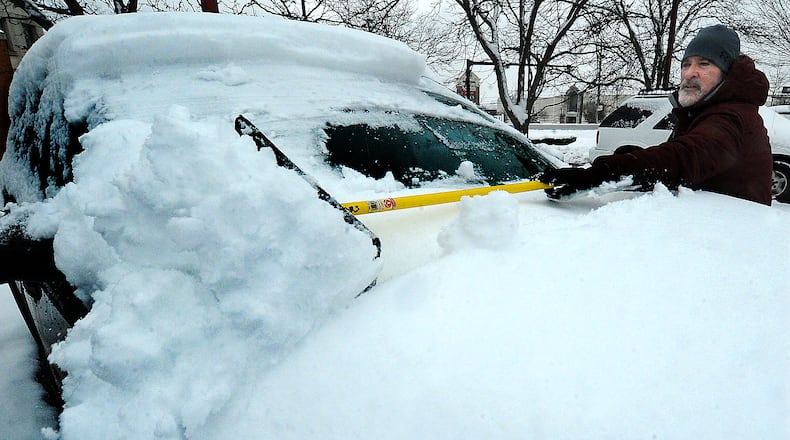“Always be prepared for winter weather,” Cassady emphasized.
In any given calendar year, Dayton usually sees about 24 inches, or about 2 feet, of snow, Cassady said.
Looking at the past five years, the region fell just short of 2 feet last year with 21.2 inches reported, as well as in 2018 when the region recorded 20.5 inches. Of the 21.2 inches of snow reported last year 3.1 inches fell in December and 2.4 in November, according to the NWS.
The Dayton area hit almost 3 feet of snow when it received 33 inches in 2019, but it fell short the next year when the region recorded 18.9 inches in 2020.
In 2021, the region reported a typical amount of snow — 24.7 inches.
Cassady said the region has been in a La Niña pattern for a good portion of this winter, resulting in a warmer than normal winter for the Miami Valley.
This is the third straight winter the area has been in that La Niña pattern, so that could have something to do with the lower snowfall amount, she said.
December was very cold by typical standards for the area, but there was only about 3 inches of snow or so, Cassady added. More colder weather doesn’t always translates to more snow.
“...It only takes one storm to really, kind of push up the numbers. If Dayton were to get — let’s say, a 6 or 8-inch snowfall — all of a sudden it could go from below normal to above normal, and that really takes just one storm for that to happen,” Cassady said.
With the rest of winter season looking to be fairly warm, the region may not see as much for the ongoing snow total, she said.
About the Author
